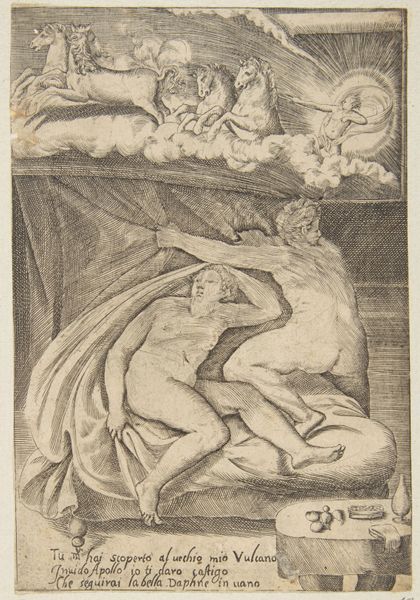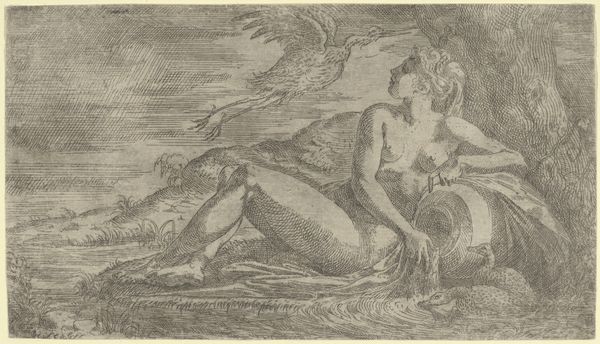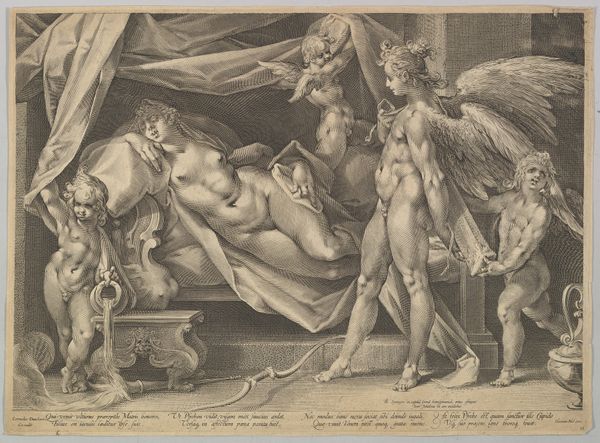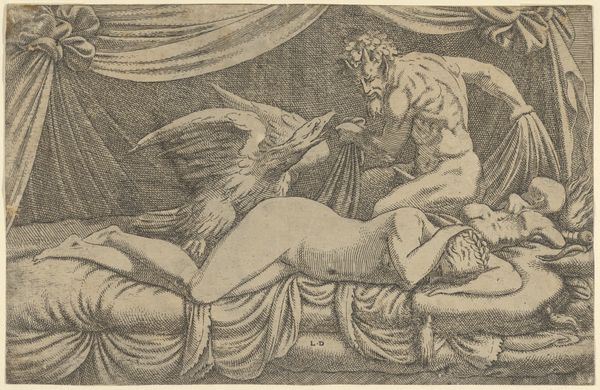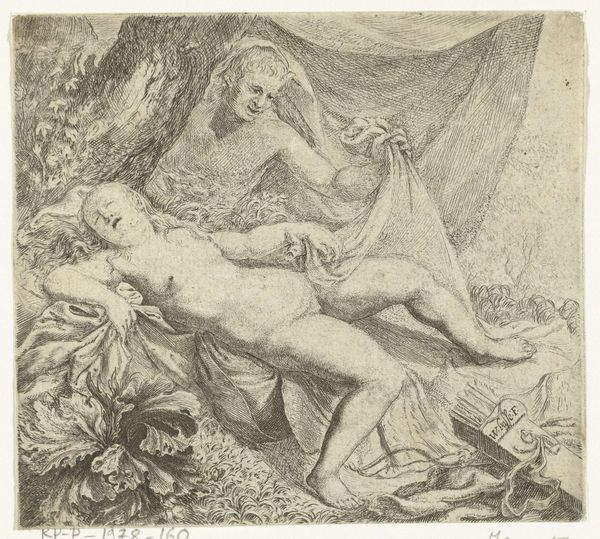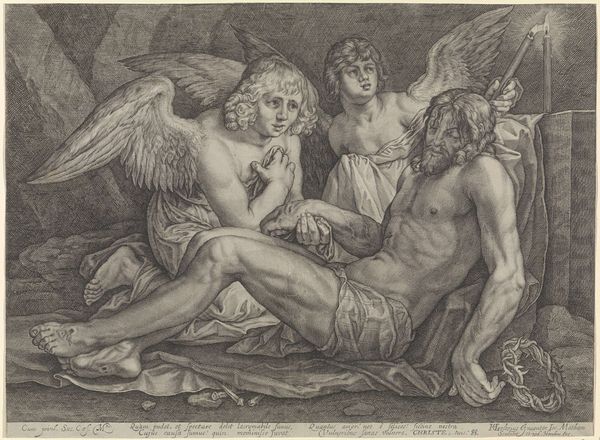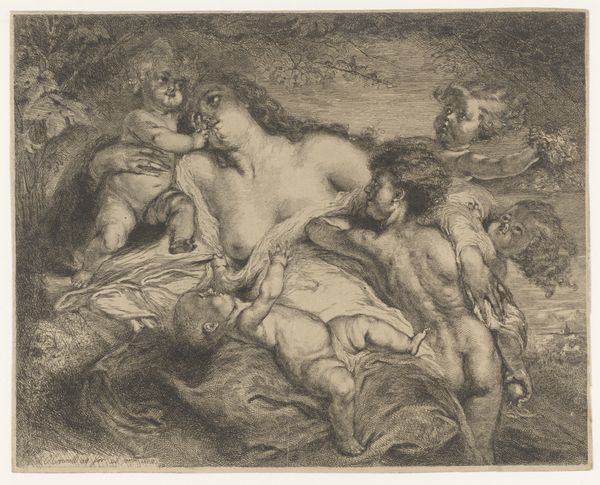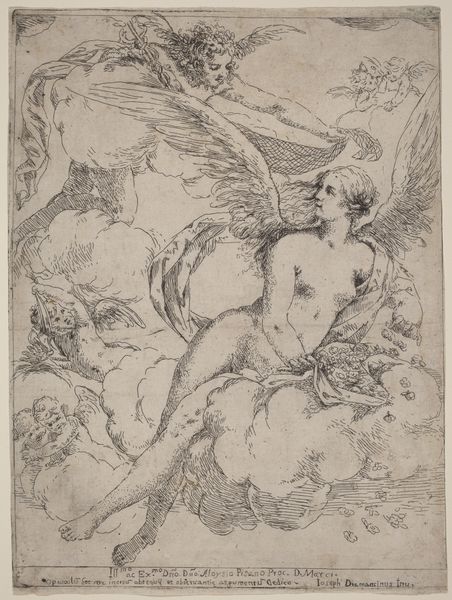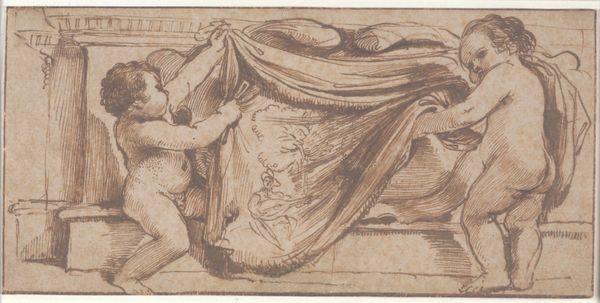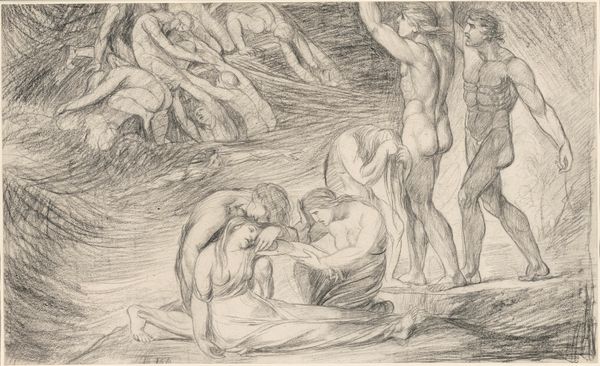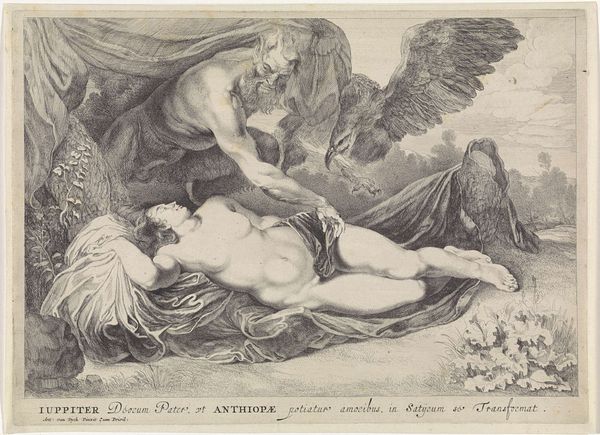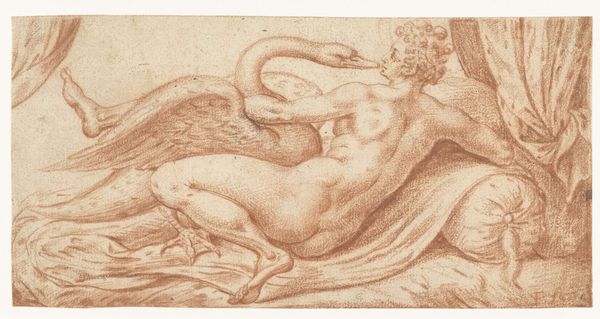
drawing, print, engraving
#
drawing
#
allegory
# print
#
mannerism
#
nude
#
engraving
Dimensions: sheet: 11 7/8 x 16 1/4 in. (30.2 x 41.3 cm)
Copyright: Public Domain
Curator: Let's take a look at "Leda and the Swan," an engraving by Cornelis Bos, dating roughly from 1544 to 1566. It currently resides at the Metropolitan Museum of Art. Editor: Immediately, I'm struck by how…contained it feels. Everything's tightly packed into the frame, the figures almost wrestling for space. Curator: That compression definitely feeds into the Mannerist style. Notice the artificial poses, the exaggerated musculature of Leda – it’s all about showcasing technical skill, perhaps at the expense of naturalism. The making process here takes precedence over nature’s form. Editor: Exactly! And think about what engraving *is*. You're pushing a burin through a metal plate, battling the material itself to create these delicate lines. This isn’t a spontaneous brushstroke; it’s deliberate labor. I'm curious if the material circumstances around printmaking–time, skill– might encourage the artist to choose to depict the classical story of Leda. It’s well-trodden and perhaps quicker to visualize because the source material is already established. Curator: That reminds me of the myth’s strangeness—Zeus transforming into a swan to seduce Leda. It's about power, transformation, the blurring of boundaries. I see something of that transformation and power play mirrored in the engraver's meticulous control over the metal plate. Each tiny stroke alters the surface and captures an incredibly passionate encounter in the story itself. The artist imposes their will to show divine will imposed on Leda. Editor: It’s interesting you mention power. I agree, though it manifests in troubling ways. I think of who had access to prints like this, and the kind of market it’s appealing to–elites who are seeking classical narratives that perhaps affirm or explore power dynamics. Curator: You've brought up some very compelling observations! This little print truly embodies some immense concepts: from mythological tales to technical craft. Editor: Absolutely. Looking closely at the labor, material conditions, and audiences who viewed it just enriches our view of Cornelis Bos’ printmaking here.
Comments
No comments
Be the first to comment and join the conversation on the ultimate creative platform.

